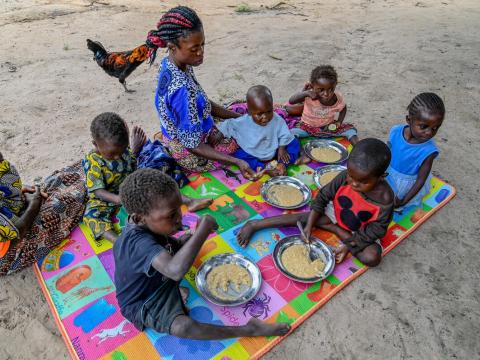
Extending the Global Nutrition Targets: What does it mean for children?
Elizabeth Margolis shares about Global Nutrition targets and how these can impact children lives.
In September of last year, World Vision realized that no government had yet come forward as a sponsor to extend the Global Nutrition Targets, which were set to expire in 2025. We knew that the world was at risk of backsliding on nutrition progress without Member State support to extend these Targets.
We began advocating to governments to sponsor this extension, and as a result, Ireland and Ethiopia took up the role. We continued advocating for sponsors, leveraging World Vision’s in-country relationships with Health Ministries. Today, this resolution was passed by the World Health Assembly with a total of 28 co-sponsors from all around the world.
What are the Global Nutrition Targets?
The Global Nutrition Targets seek to reduce stunting, wasting, anemia, low birthweight, obesity, and increase exclusive breastfeeding. Progress towards these targets has been abysmally low. By 2025, only four countries in the whole world managed to achieve a mere four of these six targets. Zero countries achieved five or all six.
WHO data shows that only 1% of countries are on track to achieve the anemia target of 50% reduction of anemia in women of reproductive age. This is truly shocking and speaks to the inaction to address women’s nutrition, and the lack of available supplements and counseling for healthy diets.
The greatest progress seen is a mere 45% of countries on track to reduce wasting – the deadliest form of malnutrition – to below 5%. Despite significant investment in child wasting, less than 1 out of 2 countries achieved this target by 2025.
What does all of this mean for children?
Children have a right to healthy food. But around the world, nearly half of the world’s children are unable to afford a healthy diet – meaning 1.12 billion children cannot exercise their right to nutritious food.
Greater investment is needed to improve access to healthy food and nutrition services through food and health systems. This includes universal coverage of all nutrition health services, known as Essential Nutrition Actions.
This global policy extending the Global Nutrition Targets must reach children and communities to tangibly improve their daily lives. The world cannot afford any more lost and stunted potential, billions of economic losses, or thwarted well-being.
2030 is coming fast. These 5 years are crucial to reach the Global Nutrition Targets and all of the Sustainable Development Goals. With nutrition underlying 12 of the 17 SDGs, we need to urgently accelerate nutrition investment multi-sectorally. It is a development imperative.
More information about World Vision’s approach to nutrition and its campaign ENOUGH:
https://www.wvi.org/ENOUGH
More about World Vision’s participation in the World Health Assembly:
https://www.wvi.org/health/world-health-assembly
Written by Elizabeth Margolis, advocacy professional specializing in health and nutrition policy. She is currently serving as Health & Nutrition External Engagement Manager for World Vision International, managing global health & nutrition policy advocacy, global events, and relationships with key partners.
